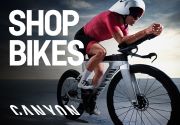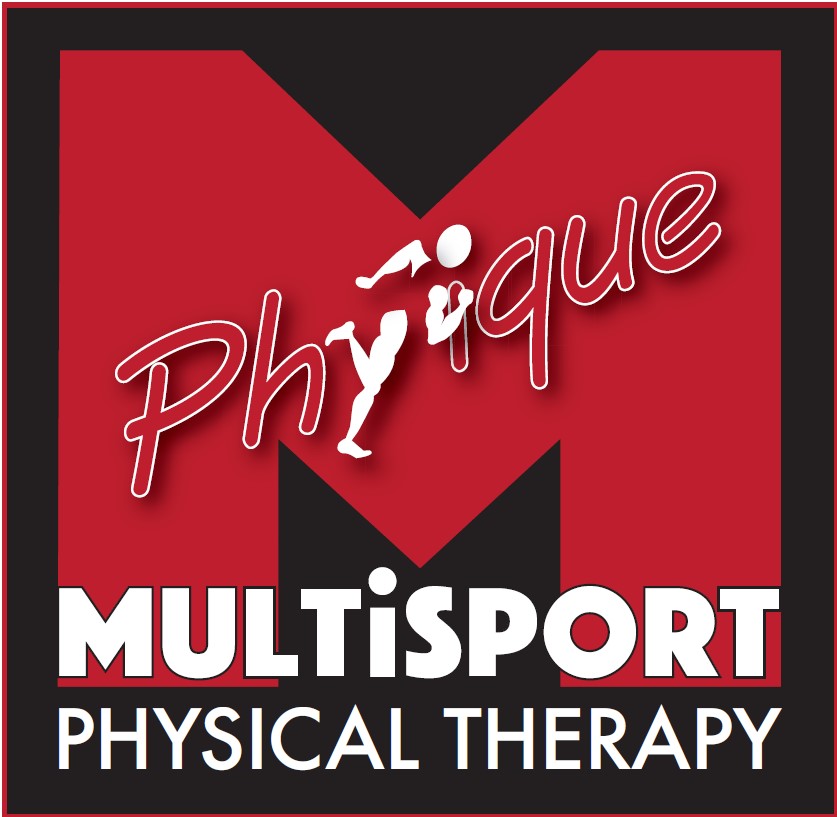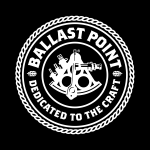Tom Washington

(Photo courtesy of opix.net)
I recently had the great privilege to talk triathlon with Tri Club member Tom Washington. Tom is absolutely a difference maker in the sport. His work heading up the Swim Buddy Program has helped many people become triathlon finishers. And as you read this, Tom is about to finish his second career Ironman at Coeur d’Alene. Please join me as we get to know Tom.
CZ: What was your athletic background before triathlons?
TW: I don’t really have an athletic background. I played Pop Warner football in 4th grade and Junior Varsity football in 11th grade. In 2000, a kickboxing gym opened near my work, so I took up Muay Thai kickboxing. I thought about becoming a pro kickboxer until I got punched. Then, I thought I would keep my day job and do kickboxing just for fun.
CZ: How did you get started racing triathlons?
TW: I started racing in triathlons in 2002. While still at the kickboxing gym, I started running because that’s what kickboxers do. Then some co-workers started a Saturday group ride to the top of Soledad Mountain, so I bought a mountain bike and joined them. I rode with them a few times until they pooped out and stopped riding on the weekends. During this time I had run my first 5K and was looking on Active.com for another 5K. That’s when I stumbled upon the Spring Sprint. I was amazed because the only triathlon I knew of was the Hawaii Ironman. I looked at the distance and said, “I could do that”. I joined the YMCA and started swimming. Once I had all of the distances down, I drove to Mission Bay Park to check out the race site. After I saw the water, I chickened out. I spent the rest of the spring regretting not racing. I then found TCSD and started going to the meetings. I eventually did the July club race. I was hooked! My wife noticed that I was one of the only people out there with a mountain bike, so when we got home she asked if I would do another race. I said “oh yeah” so she said, “go get a tri bike.” I did a few more club races before I did my first paid race, Mission Bay Tri. I loved it so much that I swore I would never miss an opportunity to race because I was chicken.
CZ: What was the inspiration that made you take the leap into Ironman racing?
TW: I had a couple of inspirations for me attempting the iron distance. First was in 2003. This was my first full season racing and I was doing the San Diego International race. I had trained for 6 months for this race and had volunteered to work at the TCSD booth. When I got to the booth, Debbie Gallo was there as well. I noticed she wore Ironman earrings. I was shocked. I thought that only 20-year-old pro triathletes did Ironmans. Debbie was so sweet and encouraging. I imagined that she would wake up on race day, bake some cookies then go race 140.6 miles. I told her there was no way I could ever do an Ironman. I trained for 6 months for the SDIT, so how on earth would I have the time to train for an Ironman? She told me I could do it if I wanted to. I never forgot that.
My next inspiration was you, Craig. I talked to you in 2003 about a Half Ironman. Again, I wasn’t sure if I could do such a distance. I would attend your Ironman meetings and listen in amazement. At one of the meetings, I finally got up the nerve to talk to you about doing a Half. You told me that I could accomplish it if I stuck to a training plan. I trained all winter and finished Ralph’s Half Ironman. After that race, I was so excited. I talked to you again, but this time about the full Ironman. Once again, I wasn’t sure if I could do the distance, but you were so confident that I could, I had no choice but to give it a try. I wasn’t going to miss this race because I was scared. I just had to get my wife’s permission first.
CZ: Wow! I did not expect that. Thank you! I must tell you – I am honored to have even the least bit of influence upon someone who commits to do a triathlon of any length. In my role, I get a lot more out of it than I give. Which Ironmans have you raced?
TW: I raced (term used loosely) at Ironman Arizona in 2005. My time was 14:04. My plan for this year is Ironman Coeur d’Alene. I am hoping to finish as comfortably as possible. Originally, the plan was for me to do IMCdA in June, then the Virginia Double Iron in October. I had my first century ride of the season a few weeks ago, and it hurt a lot. I decided not to try and double my fitness in the short time between IMCdA and the Double. So I reprioritized my season and I will spend the rest of the summer working on an ultra distance base.
CZ: Prior to that first Ironman, you seemed really nervous about whether you could finish. Now that you are an Ironman finisher, what would you tell someone in a similar situation embarking on their first Ironman?
TW: I would tell someone who’s nervous, that they should try to stick to their training schedule. The hardest part of IM racing isn’t the race, but the training. In training, you can’t get too excited about good training days or too upset about bad ones because you will encounter both over the course of your training. If you trust your schedule and relax on race day you will be fine. Oh, and don’t eat raw seafood the day before the race…trust me.
CZ: Have you done anything different to prepare for Coeur d'Alene?
TW: I switched training plans this year for IMCdA. Last year, I used a training plan from Tripower.org. Mike Plumb’s training was distance-based, and this year I used a plan that is time-based. I think I like the distance-based training better. For someone like me who is slow, I can wrap my brain around running 20 miles or riding 100 miles easier than running for 3 hours or riding for 6. Also, my tolerance for certain foods has changed. Last year on the bike I used an Ironman cocktail consisting of 2 scoops of CarboPro, 2 scoops of Cytomax and 2 scoops of Met Endurance totaling about 600 calories per bottle. I would use 2 bottles every 3 hours. I didn’t need any solid foods or gels. This season, I can’t stomach this drink. Through a process of elimination, I figured it was the Met Endurance that I couldn’t handle. I’m currently working on my race nutrition and hopefully, I will have it worked out by race day.
My key workouts for both seasons are mostly the same: swim 3,500 – 5,000 yards twice a week, 1-2 bike workouts during the week, one track workout or interval day, one long bike day and one long run day. Then I had some easy run days during the week as well.
CZ: Tell us about the Swim Buddy Program and your involvement with that?
TW: In 2004, I had the privilege of volunteering as a swim buddy at the Reebok Women’s Triathlon. A swim buddy is someone who swims alongside a nervous swimmer to give them moral support. Most of the time, these swimmers can easily do the distance in a pool, but get overwhelmed in open water in a race situation. All they need is to see someone else near them, and they’re fine. For me, it’s such a rewarding experience knowing that I was able to help someone finish a race that they might have DNF’d or worse yet DNS because they were scared. Just like I did 2 years prior.
I thought that if the women in the Reebok race appreciated it, then so would other first time triathletes in other races. Last season I contacted KOZ Enterprises. I asked if this is something I could do at all of their races, and they agreed. I really appreciate Rick and his staff letting me do this. I know they could use the volunteers in other areas of the race. I will continue to organize the Swim Buddy program as long as they let me.
CZ: What aspects of triathlon make you emotional?
TW: I am not usually an emotional guy, but I do get emotional thinking about the people we help with the Swim Buddy program. I can’t tell you how many times I have been hugged as the athlete finally puts both feet on the sand, or how many times a relative would come up and thank me for helping their loved one get through the swim.
Also, don’t tell anyone, but I always tear up during the broadcast of the Hawaii Ironman.
CZ: Don’t worry, your secret is safe with me…and the 1,500 other Tri Club members…and thousands who will read your story online. The Tri Club offers many ways to get involved. Which things are your favorites?
TW: I love the Saturday group rides. I met all of my Ironman training partners and I have made some life-long friends during these rides. I think the monthly meetings are incredible. I have learned so much from them. If it wasn’t for the meetings, especially the Ironman meetings, I don’t know if I would have even considered an Ironman. I also think the tri club’s monthly club race and beginner races are doing a lot to promote this great sport and encouraging more people to come on out and try.
CZ: What do you do to support your triathlon habit?
TW: I am a Latent Print Examiner with the San Diego Police Department. Basically, I compare fingerprints from crime scenes to suspects’ fingerprints. Before that, I was a Forensic Specialist, working crime scenes. Because I was always on call and never knew when I would have to work a crime scene, it was impossible to schedule anything. Now that I work a Monday-Friday job, I am able to train and race.
CZ: Is your family involved in your triathlon lifestyle?
TW: Yeah, my family is involved. My daughter, Lauren, is 7 going on 17. She loves going to the meetings, eating pizza and passing out raffle tickets. I think she suspects that if she is in charge of the tickets, she has a better chance of winning. My 4-year-old son, Sean, is pretty indifferent to the triathlon stuff but enjoys getting in the water at most races. My wife, Sheila, had never shown an interest in triathlons, running, biking or swimming, but on the drive home from IMAZ, she said she wanted to try it. That was more exciting than actually finishing the race. I thought it was great until she needed $100 running shoes, a new bike, wetsuit, training and racing clothes and all the extra gear that comes along with this sport. We have a plan where I find an early season IM and train all winter, and she’ll do spring and summer sprint triathlons and club races. That way, we will each get about 6 months to train and race plus time with the family.
CZ: What are your future triathlon goals?
TW: My plan for 2007 is to work on my ultra distance base during this summer, then, in the fall, prepare for IMAZ 2007. After that, I will be able to spend a good 6 months training for the Virginia Double in October. I’m not fast, so I will never qualify for Kona. I figure if I can’t beat you with speed, I will just race farther than you. If I survive the Double, who knows, maybe a Triple….or a Deca????
Just kidding, Sheila!
CZ: Tom, thank you for sharing your story. The Tri Club wishes you the best of luck at IM CDA and with all your future goals. We know you will represent us very well. Good luck!








